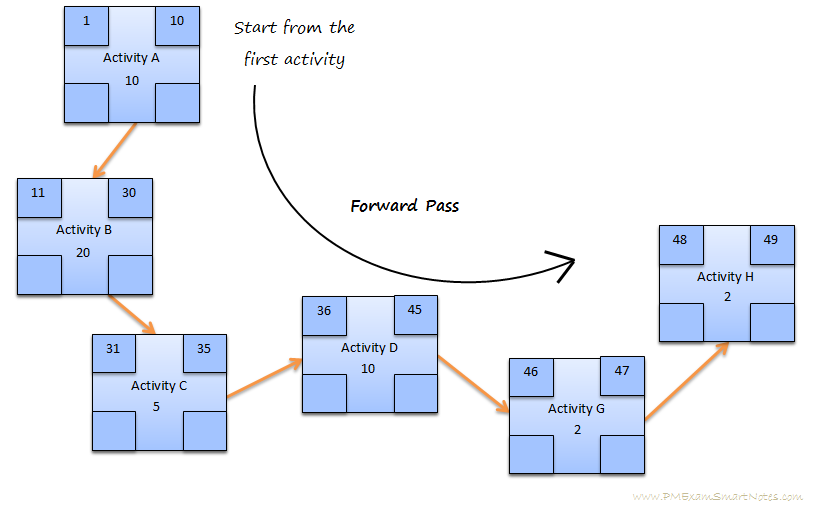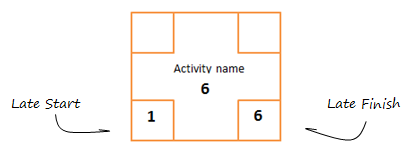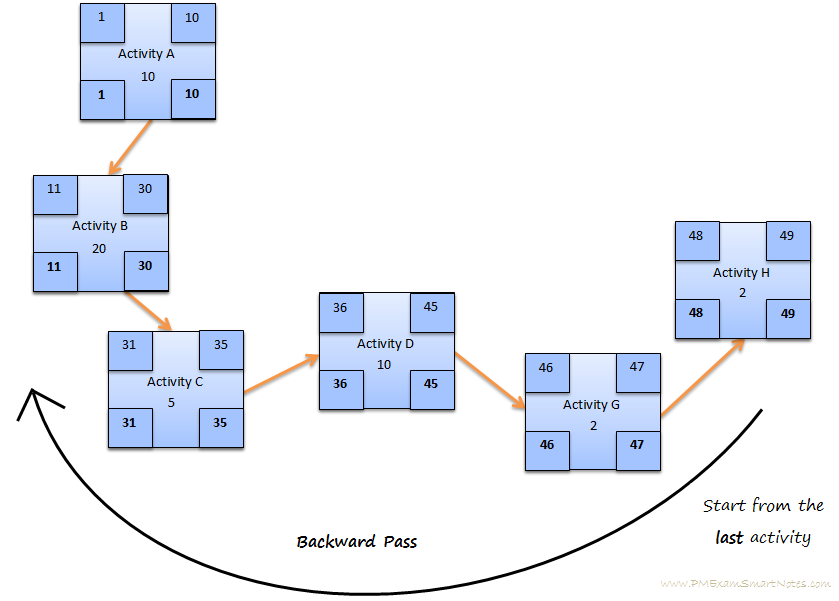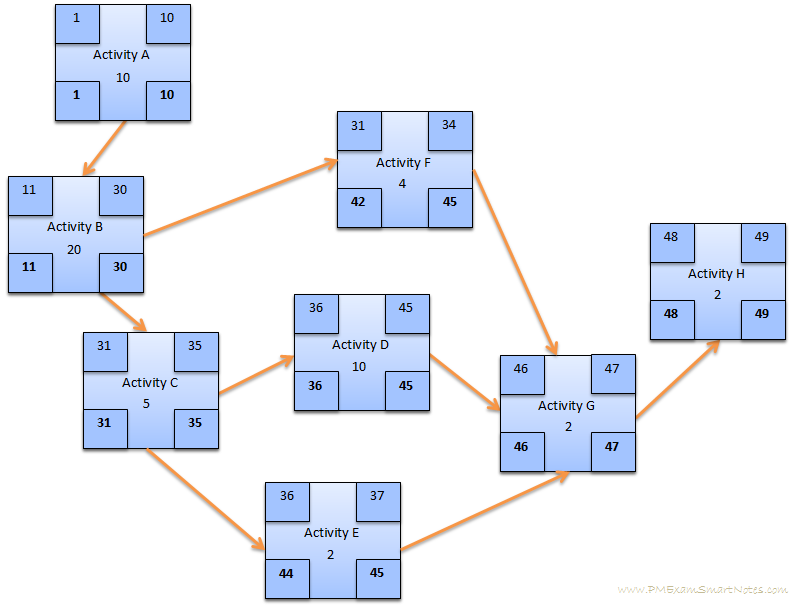Early Start, Early Finish and Late Start, Late Finish
Why do we need to know the early and late number for an activity? By knowing how early an activity can start and how late it can finish gives you the flexibility to juggle resources between other activities that can potentially impact critical path, and hence the project completion date. The shorter a network path is in relation to critical path, more schedule flexibility you will have on activities on that path.
Early start and Early finish
Indicates the earliest time an activity on a network path can start and earliest it can finish. If you decide to start an activity on its early start (assuming previous activities on that network path are completed on their early finishes), that activity can finish on its early finish (if it does not slip). And when the last activity on a network path is completed by its early finish, you have all the resources of those activities at your disposal to deploy on other high risk activities.
Calculating Early start and finish (take a FORWARD pass through network path)
Remember!: Always start with the critical path and then go with paths with descending order of their total duration.
Step 1: Early start of first activity on critical path is always 1. Write it at the top left corner of that activity box (see the image below).
Step 2: Add its activity duration to this early start number and reduce it by one. Write the resulting number on the top right corner of activity box.
Step 3: Take the subsequent number of this early finish and write as early start for next activity. Continue this till you reach the end of critical path.
Step 4: Select the network path with second highest total duration, and calculate early starts and finishes. If you find an activity with early start and finish already written do not overwrite them. Do the same for remaining network paths.
Note: If you find two activities converging on a single activity (say, activity-G), it indicates that the activity-G will start only AFTER converging activities finish. So, you will take the largest value amongst the early finish of these two activities and write subsequent number as early start of the activity-G.
Why add duration to early start and then reduce by one, to get early finish? Because the duration of an activity includes both start and finish days (or any other unit of measurement you use). So, if first activity duration is 5 days, and early start is 1 then early finish is 1+6-1 = 6. That is 6 days including the start and finish days.
 Figure 6: Early start and finish
Figure 6: Early start and finish
As you noticed, early start number is written at the top left corner of activity box, and early finish on the top right corner. The critical path with early start and early finish days will look like this –
 Figure 7: Early start and early finish for critical path
Figure 7: Early start and early finish for critical path
Late start and Late finish
Indicates the latest time an activity on a network path can start and latest it can finish. Knowing how late the last activity on the network path can start and still finish within the time to not impact critical path, will let you decide how much of flexibility you want to exercise on its schedule. However, once the last activity on the network path starts on its late start day it should not slip, else it will impact project completion date.
Calculating Late start and finish (take BACKWARD pass through network path)
Remember!: Start with the critical path, beginning at the last activity’s late finish.
Step 1: Late finish of last activity on the critical path is same as its early finish. Write this number at the bottom right corner.
Step 2: Calculate late start of this activity as the late finish minus activity duration plus 1. This calculation has the same reason – start and finish are both included in the duration. Write this number at the bottom left corner.
Step 3: Write this late start of the activity minus 1, as the late finish of previous activity. Continue this way all way till you reach the late start of first activity on the critical path.
Step 4: Select the network path with second highest total duration, and write late starts and finishes beginning at the last activity of that path. Do the same for remaining network paths.
Notes:
- If you find two activities converging on a single activity (say, activity-C), take the smallest value amongst the late start of these activities and write previous number as late finish of the activity-C.
- If you find an activity with late start and finish already written do not overwrite them.
 Figure 8: Late start and Late finish
Figure 8: Late start and Late finish
Late start number is written at the bottom left corner of activity box, and late finish on the bottom right corner. The critical path of our example with late starts and late finishes will look like this –
 Figure 9: Late start, finish for the critical path
Figure 9: Late start, finish for the critical path
Let us go back to our example and calculate early/late start/finish for the entire schedule network diagram.
 Figure 10: Early start, finish and Late start, finish for the entire schedule network diagram
Figure 10: Early start, finish and Late start, finish for the entire schedule network diagram
This has been a lengthy lesson, let us summarize in the next page..
(please use the page numbered link below to navigate) …



